Auto/Paracrine C-Type Natriuretic Peptide/Cyclic GMP Signaling Prevents Endothelial Dysfunction
- PMID: 39063044
- PMCID: PMC11277478
- DOI: 10.3390/ijms25147800
Auto/Paracrine C-Type Natriuretic Peptide/Cyclic GMP Signaling Prevents Endothelial Dysfunction
Abstract
Endothelial dysfunction is cause and consequence of cardiovascular diseases. The endothelial hormone C-type natriuretic peptide (CNP) regulates vascular tone and the vascular barrier. Its cGMP-synthesizing guanylyl cyclase-B (GC-B) receptor is expressed in endothelial cells themselves. To characterize the role of endothelial CNP/cGMP signaling, we studied mice with endothelial-selective GC-B deletion. Endothelial EC GC-B KO mice had thicker, stiffer aortae and isolated systolic hypertension. This was associated with increased proinflammatory E-selectin and VCAM-1 expression and impaired nitric oxide bioavailability. Atherosclerosis susceptibility was evaluated in such KO and control littermates on Ldlr (low-density lipoprotein receptor)-deficient background fed a Western diet for 10 weeks. Notably, the plaque areas and heights within the aortic roots were markedly increased in the double EC GC-B/Ldlr KO mice. This was accompanied by enhanced macrophage infiltration and greater necrotic cores, indicating unstable plaques. Finally, we found that EC GC-B KO mice had diminished vascular regeneration after critical hind-limb ischemia. Remarkably, all these genotype-dependent changes were only observed in female and not in male mice. Auto/paracrine endothelial CNP/GC-B/cGMP signaling protects from arterial stiffness, systolic hypertension, and atherosclerosis and improves reparative angiogenesis. Interestingly, our data indicate a sex disparity in the connection of diminished CNP/GC-B activity to endothelial dysfunction.
Keywords: C-type natriuretic peptide; angiogenesis; arterial stiffening; atherosclerosis; cyclic GMP; endothelial dysfunction; systolic hypertension.
Conflict of interest statement
The authors declare no conflicts of interest.
Figures

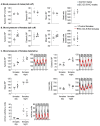
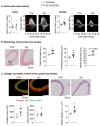

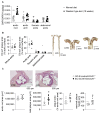
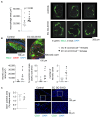
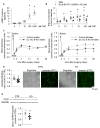
Similar articles
-
Endothelial C-Type Natriuretic Peptide Acts on Pericytes to Regulate Microcirculatory Flow and Blood Pressure.Circulation. 2018 Jul 31;138(5):494-508. doi: 10.1161/CIRCULATIONAHA.117.033383. Circulation. 2018. PMID: 29626067
-
Stabilization of Perivascular Mast Cells by Endothelial CNP (C-Type Natriuretic Peptide).Arterioscler Thromb Vasc Biol. 2020 Mar;40(3):682-696. doi: 10.1161/ATVBAHA.119.313702. Epub 2020 Jan 2. Arterioscler Thromb Vasc Biol. 2020. PMID: 31893950
-
C-type natriuretic peptide-induced relaxation through cGMP-dependent protein kinase and SERCA activation is impaired in two kidney-one clip rat aorta.Life Sci. 2021 May 1;272:119223. doi: 10.1016/j.lfs.2021.119223. Epub 2021 Feb 18. Life Sci. 2021. PMID: 33610574
-
C-type Natriuretic Peptide: A Multifaceted Paracrine Regulator in the Heart and Vasculature.Int J Mol Sci. 2019 May 8;20(9):2281. doi: 10.3390/ijms20092281. Int J Mol Sci. 2019. PMID: 31072047 Free PMC article. Review.
-
Regulation and therapeutic targeting of peptide-activated receptor guanylyl cyclases.Pharmacol Ther. 2011 Apr;130(1):71-82. doi: 10.1016/j.pharmthera.2010.12.005. Epub 2010 Dec 24. Pharmacol Ther. 2011. PMID: 21185863 Free PMC article. Review.
References
-
- Wu J., Thabet S.R., Kirabo A., Trott D.W., Saleh M.A., Xiao L., Madhur M.S., Chen W., Harrison D.G. Inflammation and mechanical stretch promote aortic stiffening in hypertension through activation of p38 mitogen-activated protein kinase. Circ. Res. 2014;114:616–625. doi: 10.1161/CIRCRESAHA.114.302157. - DOI - PMC - PubMed
MeSH terms
Substances
Grants and funding
LinkOut - more resources
Full Text Sources
Molecular Biology Databases
Research Materials
Miscellaneous

